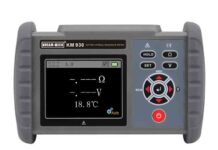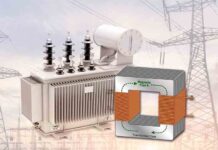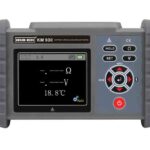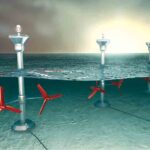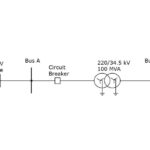
IEC 62305 provides a globally accepted standard for lightning protection, offering a systematic approach to assess risks and implement effective safety measures. This article highlights the basics of lightning and how IEC 62305 helps minimise its impact.
What is lightning?
Lightning is a natural phenomenon which takes place due to formation of heavy electric field between the earth and the clouds. The discharge of energy when opposite ions come enough closer to each other in the form of lightning strike that carries huge amount of current upto the range of 200kA. In electrical terms, lightning is defined as a wave shape having some rise time of 10 microsec and time to half as 350 microsec (known as 10/350 microsec wave).
Tall structures, trees, metal parts, open land and sometimes even human beings can be hit by lightning strikes. With the lightning strikes, high electromagnetic interference is created, and it can damage the electrical, electronic equipment physically or by corrupting the software loaded in these electronic devices. The damages of lightning can be as hazardous as damage of complete installation/building, cause fire, or sometimes non availability of the very essential services.
Result of lightning may be:
a. Physical crack in building structure causing huge and unplanned financial expenditure for immediate repairing, finishing, and painting work.
b. Dangerous fire incidents causing huge and unplanned financial expenditure for immediate repairing, finishing and painting work.
c. Injury/casualty to living beings causing irreversible losses to the family.
d. Failure of costly electrical and electronic equipment such as TV, Computer, AC, Refrigerator etc., causing unplanned financial expenditure for immediate repairing / replacements.

Now a days, residential building of 3-4 storey in an area of 15×10 mtr. is common in Metro tier 1, 2, 3 cities. The cost of construction is in the range of Rs. 70 lacs to 100 lacs and the values of electrical & electronic gadgets are approx. Rs. 2 to 3 lacs. Such residential buildings are getting affected due to lightning & frequent incidents are reported during rainy / stormy days. The damages can be minimised or eliminated by using Lightning Protection System (LPS) at an expense of approx. 0.25% to 2% of total asset value based on site conditions.
What is lightning protection?
Lightning protection refers to the methods and systems designed to safely intercept, conduct, and dissipate lightning energy to the ground, minimising damage to structures and electrical systems.
The IEC 62305 standard is a comprehensive international guideline that provides detailed methodologies for the protection of structures and people from lightning effects. It is widely adopted across industries and countries to design effective lightning protection systems.
The Lightning Protection Kit will contain the following:
a. External Lightning Arrestor Components – Air terminal, Down conductor, Earthing system, clamps connectors and other accessories.
b. Surge Protection Devices for Power supply & Communication like Television, Internet Modem etc.
What is IEC 62305?
IEC 62305 is a series of standards published by the International Electrotechnical Commission (IEC), specifically addressing lightning protection. It is divided into four parts:
- Part 1: General principles
- Part 2: Risk management
- Part 3: Physical damage to structures and life hazard
- Part 4: Electrical and electronic systems within structures
Together, these parts offer a systematic approach to assessing lightning risks and designing protection measures.
Core objectives of IEC 62305
- Risk Assessment: Evaluating the probability and consequences of lightning strikes on a structure
or system. - Protection Design: Establishing guidelines for external and internal lightning protection.
- Minimising Damage: Preventing fire, structural failure, electrical surges, and personal injuries.
- Safety of Electrical/Electronic Systems: Protecting sensitive systems inside buildings.
Risk assessment (IEC 62305-2):
Before implementing any protection, IEC 62305 emphasises performing a risk assessment to determine the need and level of protection. The risk assessment considers:
- The location of the structure (lightning density)
- The type of structure and its use
- The value of the structure and its contents
- Potential human occupancy and exposure
- Possible financial loss or business interruption
The standard provides formulas and tables to quantify risks. If the risk exceeds acceptable limits, protection measures must be designed accordingly.
External Lightning Protection System (LPS) — IEC 62305-3:
This part addresses protecting structures against physical damage caused by direct lightning strikes.
Key Components:
- Air Terminals (Lightning Rods): Placed at the highest points to intercept strikes.
- Down Conductors: Provide a low-resistance path from air terminals to the earth.
- Earth Terminals (Grounding): Ensure safe dissipation of the lightning current into the ground.
- Equipotential Bonding: Ensures that all metallic parts inside and outside the structure are at the same electrical potential, reducing dangerous voltage differences.
Protection zones:
IEC 62305-3 introduces the concept of protection zones (Zone 0 to Zone 3), defining areas of decreasing lightning strike risk inside and around the structure, guiding the placement of protective elements.
Internal Lightning Protection — IEC 62305-4
Lightning can induce dangerous surges in electrical and electronic systems. Part 4 focuses on internal protection against:
- Electromagnetic Effects: Surges caused by lightning electromagnetic fields.
- Conducted Effects: Surges traveling through power or communication lines.
Measures Include:
- Installation of Surge Protective Devices (SPDs)
- Shielding and proper grounding of cables and equipment
- Separation and routing of wiring to minimise coupling
Implementation Steps as per IEC 62305
- Conduct Risk Assessment: Determine necessity and level of protection.
2. Design External LPS: Plan air terminals, conductors, and grounding systems.
3. Establish Internal Protection: Include SPDs and equipotential bonding.
4. Installation: Follow IEC guidelines on materials and workmanship.
5. Inspection and Maintenance: Periodic checks to ensure system integrity and functionality.
Benefits of Following IEC 62305
- Standardised Approach: Ensures uniform safety measures across industries.
- Optimised Protection: Risk-based design prevents over- or under-protection.
- Comprehensive Coverage: Addresses both physical and electrical hazards.
- Regulatory Compliance: Meets international safety requirements and codes.
Conclusion
IEC 62305 is the benchmark standard for lightning protection worldwide. By combining risk assessment with carefully designed external and internal protection measures, it provides a robust framework to safeguard people, structures, and sensitive electronic systems from lightning hazards. Adhering to IEC 62305 not only enhances safety but also minimises economic losses from lightning-related incidents.

Akash Kumar Das, Product Management Lead – Protection Solutions, Raychem RPG.


